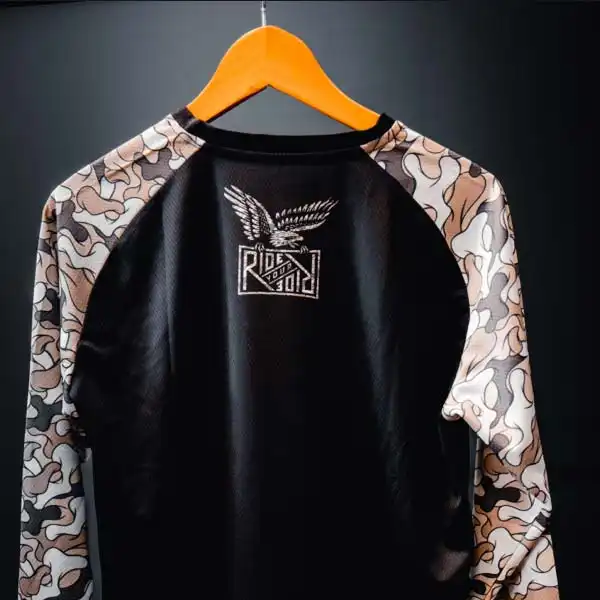Flying with Your Bicycle - Can You Really Fly without an Extra Cost for your Bicycle
It's always exciting to travel to new destinations and check out some new riding experiences. From new trails to new roads, getting out of your own backyard and heading someplace by airplane is a great way to have a healthy vacation and put some new inspiration into your rides.
Unfortunately, the biggest hurdle is typically getting your bicycle onto the plane. From packing to fees, it can be intimidating to even think about traveling with your bicycle.
Here's some information on how to budget for airline fees, packing and one alternative to flying with your bicycle.
What's the best way to pack my bicycle for air travel?
Packing your bicycle in a bike box or hard-sided case for air travel can help protect it from damage during transit. Here are some tips for packing your bicycle in a bike box or hard-sided case:
-
Remove any loose or removable components from your bicycle, including pedals, water bottle cages, and any accessories such as lights or bells.
-
Deflate your tires to the minimum recommended pressure.
-
Secure your derailleur hanger in place with a derailleur hanger tool or similar device. This will help prevent damage to your derailleur during transit.
-
Remove your front wheel and pack it separately from the frame, using padding to protect it from damage.
-
Secure your handlebars to the frame with a handlebar bag or similar device, or turn them parallel to the frame and secure them in place with a handlebar strap.
-
Use bubble wrap or other padding to protect your frame and components from damage.
-
Close and seal the bike box or hard-sided case, and label it with your contact information and a "Fragile" sticker.
It is important to follow the specific guidelines and requirements of your airline for packing and transporting bicycles as checked baggage. Failure to properly pack your bicycle could result in damage or additional fees.
What's the best way to pad and protect my bicycle?
There are a few different ways to pad and protect your bicycle when packing it for transport or storage:
-
Bubble wrap: Bubble wrap is a lightweight and flexible material that can be used to pad and protect your bicycle and its components. It is particularly useful for protecting areas of your bicycle that are prone to dents or scratches, such as the frame and fork.
-
Foam sheets or rolls: Foam sheets or rolls can be cut to size and used to pad and protect your bicycle and its components. They are particularly useful for protecting areas that are more prone to damage, such as the derailleur hangers or the bottom of the bike box.
-
Furniture pads or blankets: Furniture pads or blankets can be used to wrap your bicycle and provide additional protection against scratches or dents. They can also be used to protect your bicycle while it is in storage or being transported in a car.
-
Bike-specific padding: There are also a number of bike-specific padding options available, such as handlebar wraps, fork protectors, and derailleur hanger tools, which can help protect your bicycle and its components during transport.
In addition to padding your bicycle, it is also important to properly disassemble and secure your bicycle before packing it for transport or storage. This will help ensure that it is protected and stays in good condition.
How much does it cost to fly with a bicycle on an airline in the United States?
The cost to fly with a bicycle on an airline in the United States can vary depending on the specific airline and the route you are flying. Some airlines may allow you to bring a bicycle as a piece of checked baggage for an additional fee, while others may require you to purchase an additional seat for your bicycle.
Generally, you can expect to pay between $50 and $200 to fly with a bicycle on a domestic flight within the United States. The actual cost may be higher or lower depending on the size and weight of your bicycle, as well as any additional fees or charges that may apply.
It is important to check with your specific airline for their policies and fees for flying with a bicycle. Many airlines have specific guidelines for packing and transporting bicycles as checked baggage, and you may need to disassemble your bicycle and pack it in a specific way to ensure it is accepted as checked baggage.
How Much Are Fees for Bicycles on the Larger U.S. Airlines?
The cost to fly with a bicycle on a major airline in the United States can vary depending on the specific airline and the route you are flying. Here is a summary of the policies and fees for flying with a bicycle on some of the major airlines in the United States:
-
American Airlines: American Airlines allows bicycles as checked baggage on domestic and international flights, but you must disassemble the bicycle and pack it in a bike box or hard-sided case. The fee for flying with a bicycle on American Airlines is $150 per one-way trip.
-
Delta Air Lines: Delta Air Lines allows bicycles as checked baggage on domestic and international flights, but you must disassemble the bicycle and pack it in a bike box or hard-sided case. The fee for flying with a bicycle on Delta Air Lines is $200 per one-way trip.
-
Southwest Airlines: Southwest Airlines allows bicycles as checked baggage on domestic flights, but you must disassemble the bicycle and pack it in a bike box or hard-sided case. The fee for flying with a bicycle on Southwest Airlines is $75 per one-way trip.
-
United Airlines: United Airlines allows bicycles as checked baggage on domestic and international flights, but you must disassemble the bicycle and pack it in a bike box or hard-sided case. The fee for flying with a bicycle on United Airlines is $150 per one-way trip.
It is important to note that these fees are subject to change and may vary depending on the specific route and circumstances. It is always a good idea to check with your specific airline for their most current policies and fees for flying with a bicycle.
What about Frontier Airlines? Does they let you fly for free with a bicycle?
Unfortunately, nothing on Frontier is free. Frontier Airlines does not allow bicycles to be brought on board as carry-on baggage, and they do not offer a free service for transporting bicycles as checked baggage.
If you want to fly with a bicycle on Frontier Airlines, you will need to disassemble your bicycle and pack it in a bike box or hard-sided case. The fee for flying with a bicycle on Frontier Airlines is $75 per one-way trip, in addition to any applicable checked baggage fees.
It is important to note that Frontier Airlines' policies and fees for flying with a bicycle are subject to change, and you should always check with the airline directly for the most current information.
What should I do when I get to my destination?
Arrival! Let's go!
hen you arrive at your destination with your bicycle, there are a few things you can do to ensure that your bicycle is safe and ready to ride:
-
Unpack your bicycle and reassemble it according to the manufacturer's instructions.
-
Check that all components of your bicycle are properly tightened and adjusted.
-
Check your tire pressure and inflate your tires to the recommended pressure if necessary.
-
Test ride your bicycle to make sure everything is working properly.
-
If you have been traveling with your bicycle in a hard-sided case or bike box, consider storing it in a secure location while you are at your destination. This can help protect your bicycle from damage or theft.
It is also a good idea to familiarize yourself with local cycling laws and regulations at your destination, and to be aware of any hazards or challenges you may encounter while riding your bicycle.
What About Renting a Bicycle Instead of Flying with it?
Whether it is better to rent a bicycle at your destination or to travel with your own bicycle depends on a variety of factors, including your travel plans, budget, and personal preferences.
Here are a few things to consider when deciding whether to rent a bicycle or travel with your own:
-
Travel convenience: Traveling with your own bicycle can be convenient if you are planning to do a lot of cycling at your destination and want to have your own familiar bike. However, it can also be inconvenient to have to pack and transport your bicycle, especially if you are flying. Renting a bicycle at your destination may be more convenient, especially if you are only planning to do a small amount of cycling or if you are staying in a location with easy access to rental bikes. Some shops will even meet you at the airport with your rental bicycle or take you to their shop to get your rental started. Check around with local shops to see what they offer.
-
Cost: Traveling with your own bicycle can be expensive, especially if you have to pay fees to transport it as checked baggage on an airline. Renting a bicycle at your destination may be a more cost-effective option, especially if you are only planning to do a small amount of cycling.
-
Quality and reliability: Traveling with your own bicycle can give you peace of mind, as you know that it is in good condition and has been properly maintained. Renting a bicycle at your destination may be less reliable, as the quality and maintenance of rental bikes can vary.
Ultimately, the decision to travel with your own bicycle or to rent a bicycle at your destination will depend on your specific travel plans and needs. It is a good idea to weigh the pros and cons and consider all of the factors that are most important to you.









